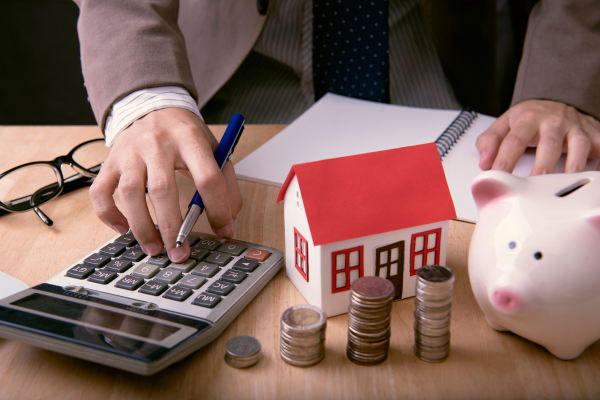Are you dreaming of buying a home in Singapore? The first step is understanding the all-important down payment. We’ll break it down into simple terms and guide you through the process.
What’s a Down Payment?
When you’re buying a home in Singapore, the down payment is like your first financial commitment to the property. It shows that you’re ready for the responsibilities of homeownership. The more you can pay upfront, the less you’ll need to borrow, which means lower monthly mortgage payments.
In Singapore, the minimum down payment varies depending on the property type. Public housing under HDB generally requires less, while private properties might need more. Keep an eye on these requirements when buying a home in Singapore as they can change due to government policies and market conditions. If you’re a first-time homebuyer, a Singaporean citizen, or a permanent resident, you might be eligible for reduced rates or grants.
Finding the funds for your down payment is crucial. You can use personal savings, contributions from your Central Provident Fund (CPF) account, or government grants. But be aware that there are rules about using your CPF funds. Start planning and saving early and explore assistance programs if needed.

How It Affects Your Loan Eligibility
The Total Debt Servicing Ratio (TDSR) is important when you’re applying for a home loan. It calculates how much of your income can be used to cover all your debts, including your mortgage. A larger down payment can make your TDSR look better, increasing your chances of getting a loan.
Your down payment size also impacts your choice of loan term and interest rates. A bigger down payment means a smaller loan, which can lead to shorter loan terms and lower interest rates. This saves you money in the long run. Understanding these effects is crucial for making smart decisions when choosing a home loan.
Let’s take a look at Sarah’s journey to homeownership and discover how you can make it happen, starting with a focus on the all-important down payment.
Step 1: Setting Down Payment Goals
Meet Sarah, a 28-year-old professional in Singapore with a strong desire to own her own place. Her first step is to assess her financial situation. She evaluates her income, expenses, and financial commitments. This budgeting exercise helps her determine a realistic down payment goal. With the assistance of her financial advisor, Sarah decides that aiming for a 20% down payment is ideal for her circumstances.
Step 2: Exploring Down Payment Sources
To reach her down payment goal, Sarah considers various sources:
Personal Savings: She starts saving a portion of her income and cuts back on non-essential expenses. To keep things organized, she opens a dedicated savings account for her home fund.
CPF Contributions: Sarah investigates using her Central Provident Fund (CPF) savings for her home purchase. She discovers that her CPF Ordinary Account savings can be used for the down payment, subject to specific conditions. This turns out to be a significant help.
Government Grants: As a first-time homebuyer and Singaporean citizen, Sarah is entitled to government grants. These grants lessen her minimum down payment requirements, reducing her financial burden.
Step 3: Navigating the Home Buying Process
Sarah seeks guidance from a mortgage advisor who helps her make sense of home loans, down payments, and the entire home buying process. The advisor suggests suitable loan options based on her down payment capacity and financial profile. With their help, Sarah gathers all the necessary financial documents and ensures her down payment funds are accessible when needed.
Step 4: Achieving Long-Term Financial Well-Being When Buying A Home In Singapore
After successfully securing her dream home, Sarah remains financially responsible. She ensures she can comfortably make her mortgage payments and cover other homeowner costs without straining her finances. Sarah also builds a financial safety net to handle any unexpected financial challenges, like home repairs or emergencies.
By following this plan, exercising patience and financial discipline, Sarah’s dream of homeownership becomes a reality. She not only becomes a proud homeowner but also sets herself on the path to long-term financial well-being. So, if owning a home in Singapore is your dream, remember that with the right strategy and determination, it’s within your reach.
Your down payment also affects mortgage insurance and how lenders see your creditworthiness. A larger down payment can lower the need for mortgage insurance and improve your lending terms. Keep these factors in mind when figuring out your loan eligibility and costs.

Smart Financial Planning
Start by setting realistic down payment goals. Assess your financial situation, considering your income, expenses, and other financial goals. A budget and savings plan will help you stay on track. If you’re not sure, consider seeking professional financial advice.
Look into government grants and subsidies. Singapore has programs for first-time homebuyers and eligible citizens that can reduce down payment requirements. You can also explore contributions from family members. Timing is important, so save during periods of lower property prices or interest rates.
Buying A Home In Singapore: Navigating the Home Application Process
Working with a mortgage advisor or broker when buying a home in Singapore, can make your life easier. They’ll help you find suitable loan options based on your down payment and financial profile. Ask about their experience and services.
Being prepared legally and financially when making an offer on a property is essential. Understand the legal side and gather all necessary documents. Be ready to access your down payment funds when needed. This preparation will make the home buying process smoother and less stressful.
After securing a home and making a down payment, maintain good financial discipline. Make sure you can comfortably cover your mortgage payments and other homeowner costs. Have a financial safety net for any unexpected challenges. This way, you’ll achieve long-term financial well-being and enjoy your new home.
Want to find the best mortgage rate in town? Check out our free comparison service to learn more!
Read more of our posts below!

